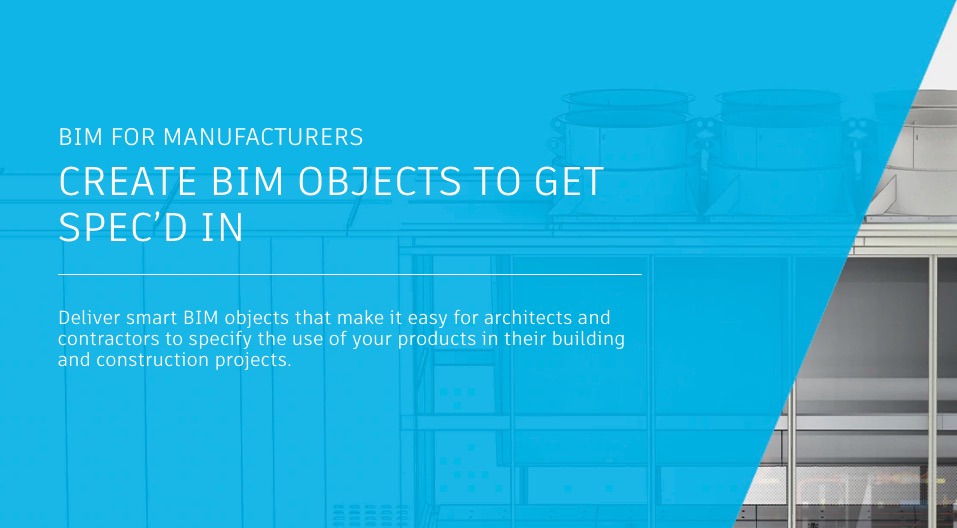
Manufacturers that design products and equipment that go into buildings have long used digital models to develop new offerings on shorter schedules. Now, their customers on the building and construction side—including architects, contractors, and building owner/operators—are adopting sophisticated digital approaches en masse. While both groups understand the benefits of digital workflow, they each have very different needs.
Manufacturers of everything from HVAC systems to windows to elevators typically use 3D mechanical CAD software to create high-fidelity models needed to ensure proper manufacturing and assembly. Architecture, engineering, and construction (AEC) firms use a different standard, Building Information Modeling (BIM), to plan, design, construct, and manage building projects. Each of these models are fundamentally different and they can’t be used interchangeably.
So, what exactly is Building Information Modeling? Let’s take a look.
What is BIM?
The U.S. National Building Information Model Standard Project Committee defines BIM in this way: “Building Information Modeling (BIM) is a digital representation of physical and functional characteristics of a facility. A BIM is a shared knowledge resource for information about a facility forming a reliable basis for decisions during its life-cycle; defined as existing from earliest conception to demolition.”
Essentially, BIM makes it easier for all stakeholders in the building lifecycle to share information about the building. It allows everyone from architects to surveyors to structural engineers to building owners to use the same shared 3D model. This helps everyone gain access to the right information at the right time throughout the process of designing and constructing a building. It reduces the gaps and information loss that can occur when one team hands the project off to the next. And at the end of the build, BIM objects combine to create a reliable information model of the entire building, with all assets linked to key data required to operate and maintain it effectively.
Defining BIM objects in more detail, they’re digital representations of building products and materials that can go into intelligent building models. Manufacturer-specific BIM objects contain 3D representations of the product along with associated metadata, such as Omniclass classification, material, model number, MEP connections, and service information.
All this data and new modeling standards work to win more business for building product manufacturers by streamlining the design and production process.
To learn more about how to drive growth through BIM objects, view the free guide here.




Add comment
Connect with: Log in
There are no comments